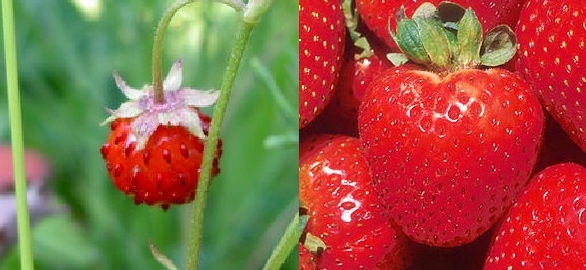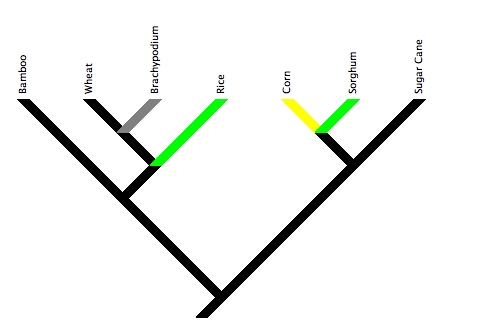A really nice thing about many crop plants is that through natural self pollination it is possible to create true breeding inbred lines. Inbred lines plants that are homozygous across all or nearly all of their genomes. If the same inbred plant is the used as the mother and father to produce new seeds, all those seeds will be genetically identical to the parent plant. Just like identical twins. And like identical twins, inbred lines make it possible to understand a LOT more about the interplay of genetics and environment since we have a chance to see how different or similar the characteristics of genetically identical individuals turn out to be.
(more…)December 29, 2021
April 5, 2010
Why popcorn pops
Popping corn, or anything else, all comes down to pressure. Pop-corn has a particularly impermeable pericarp (the corn kernel’s shell), so as it is heated, the water inside the kernel vaporizes into steam and the starch turns into something close to a liquid. Eventually the heat creates enough pressure to split the pericarp and the starch of the corn kernel bursts out, resolidifying into the distinctive shape of popcorn. If there is even the smallest hole in the pericarp, the steam can escape from the kernel as it’s generated so the pressure never builds up enough to explode the pericarp — the reason some kernels will fail to pop in every batch. The explosive build up of steam is also the reason tea kettles need to be able to release steam while they’re used to boil water. The alternative would be exploding tea kettles which are a lot more dangerous (and a lot less tasty) than exploding corn kernels.
It was this reason (along with my discovery of the website on April 1st) that I was so suspicious of the idea of popped sorghum a few days ago. Thanks to Party Cactus and Jeremy, I now know that sorghum does indeed pop like corn (there’s even a variety called “Tarahumara Popping”) and, in fact, thanks to the link Jeremy provided, I’ve discovered that most grains and even some other things (including cowpeas!) can be popped using the proper equipment. (more…)
March 26, 2010
The two genomes of maize
I recently go back from the maize meeting. I mentioned before that big part of the reason to do poster presentations is to get comfortable discussing ones research with people who haven’t specialized in the exact same subject. In my case, my poster got a fair bit of interest which was great. (Although I was surprised which parts people were most interested in.) But there were also a couple of concepts I had a lot of trouble getting across.
It’s too late to do me any good at the maize meeting, but I have created the figure I think I needed to explain those ideas. Too late for the maize meeting, but maybe I can squeeze it into my qualifying exam proposal. Or maybe the next time I get a chance to give a talk on campus. Let’s just not get into how much of my morning I spent putting this together, and pretend it was a good investment of my time ok? (more…)
November 23, 2009
The Domestication of Maize
Twenty thousand years ago, not a single crop species existed in its current form. Almost* every bite of food you eat today is the result huge amounts of human artificial selection, both unconsciously and intentionally by farmers and plant breeders. Sometimes the obvious changes are minor, for example between wild and domesticated strawberries:
Clearly one of the major traits early strawberry growers selected for was bigger fruits. Which makes sense since it takes about the same amount of time an effort to pick a strawberry either way, but if you’re picking the ones on the right you’ll have more pounds of fruit picked at the end of the day.
But even in this case, the similarity in form hides major changes at the genome left. Strawberries went through two whole genome duplications during domestication (looks like it’s more complicated than I made it sound see comments), so each of the cells in the strawberries on the right contain eight copies of each chromosome, while the strawberry on the left contains the more standard two copies of each chromosome.
On the other end of the spectrum is maize. (more…)



